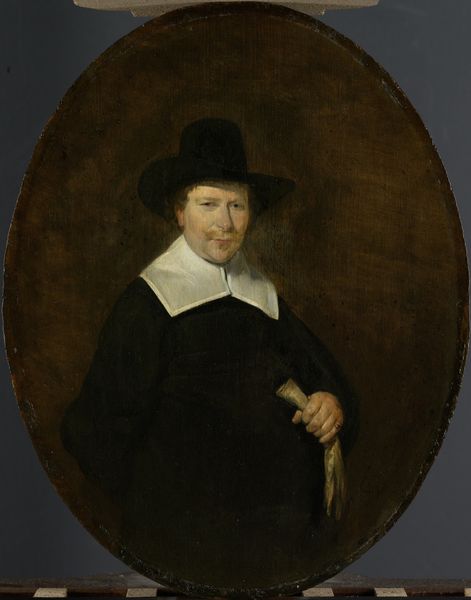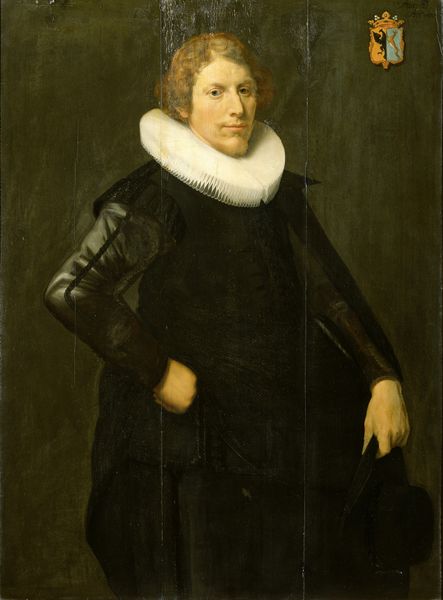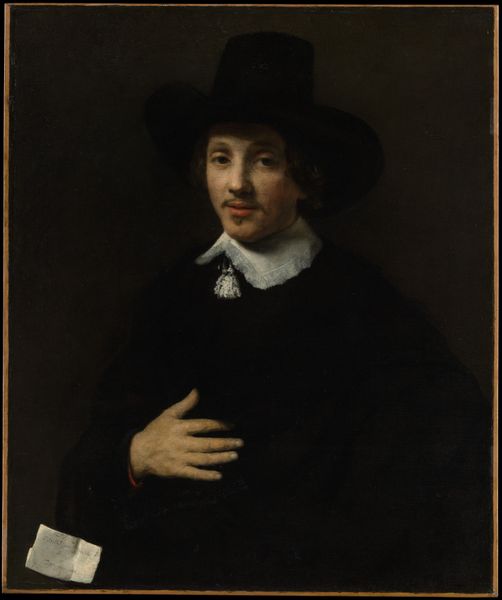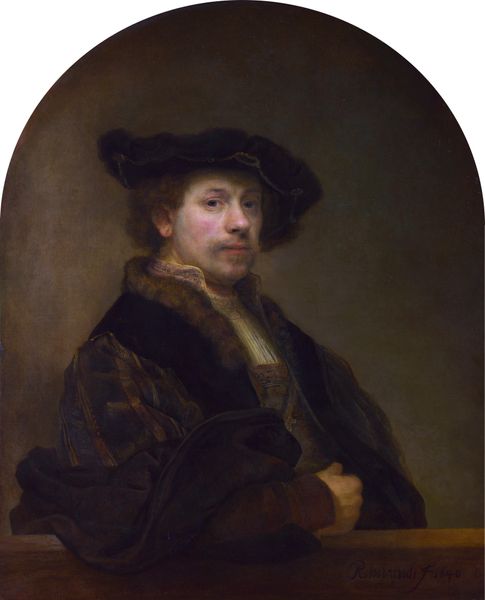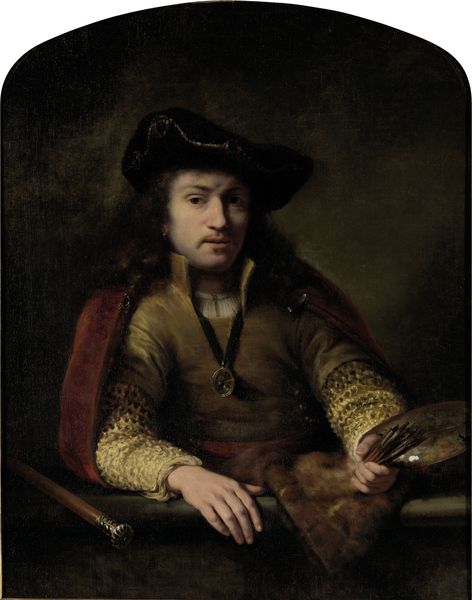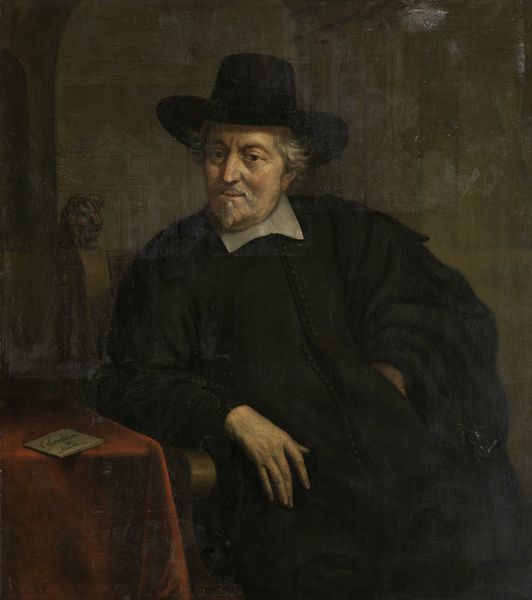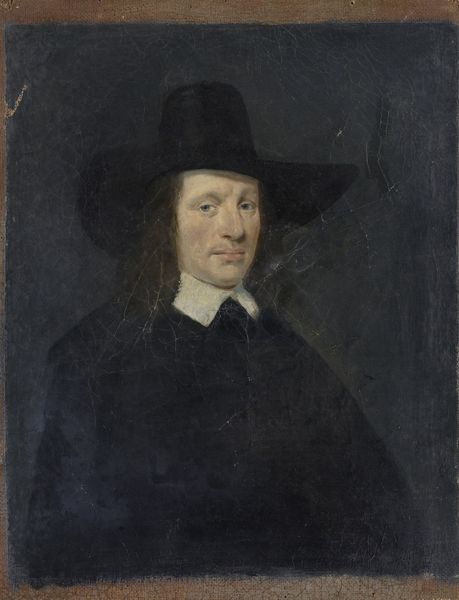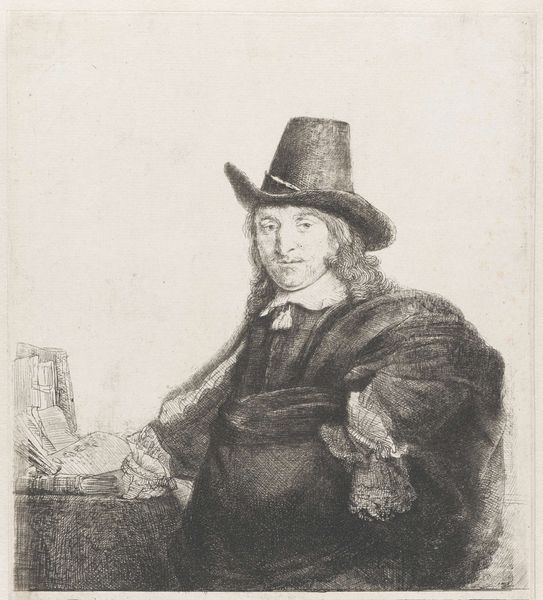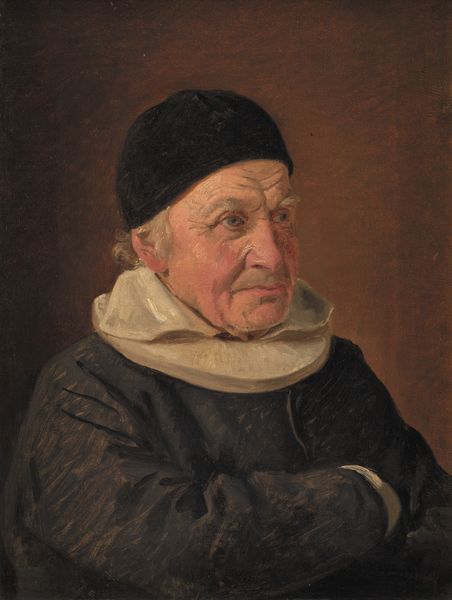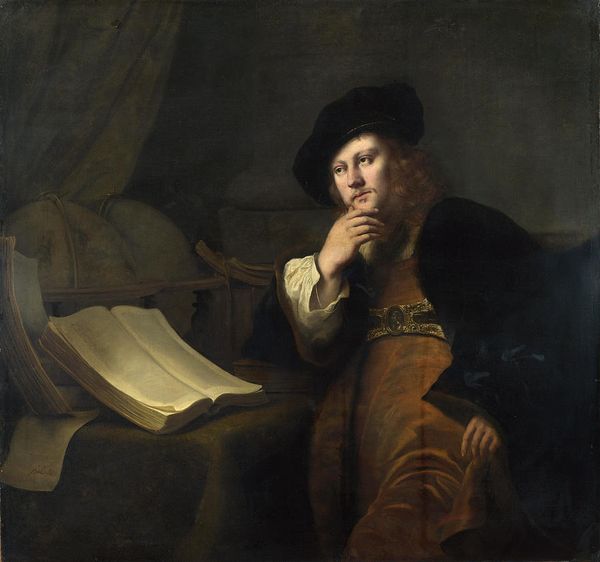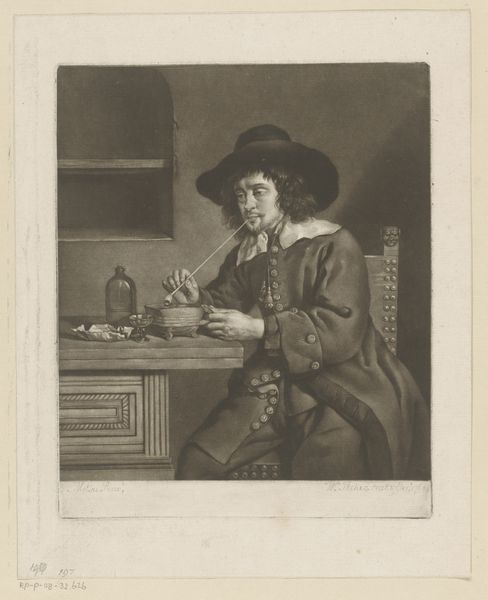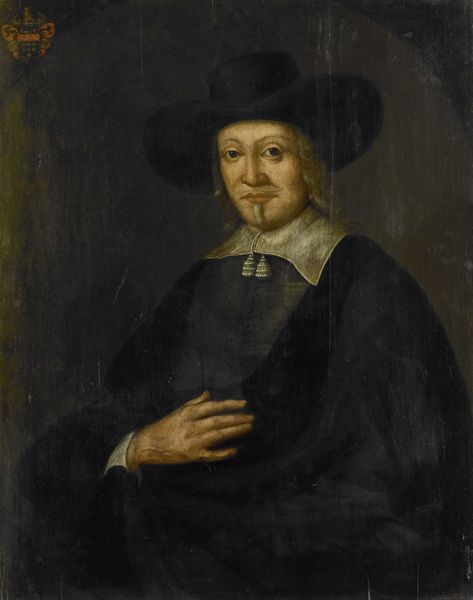
oil-paint
#
portrait
#
baroque
#
oil-paint
#
oil painting
#
genre-painting
Dimensions: height 50.5 cm, width 40 cm
Copyright: Rijks Museum: Open Domain
Johannes Spilberg painted this portrait of Jan van de Poll, Burgomaster of Amsterdam, on canvas during the 17th century. Consider the materiality of this painting, beginning with the cloth support. Canvas, woven from flax or hemp, was a widely available, relatively inexpensive surface, ideally suited to larger-scale works. The application of paint involved a highly skilled process; building up layers of pigment to achieve depth, realism, and capture the essence of the sitter. Spilberg carefully applied the oil paint to mimic the textures of skin, clothing, and metal. The overall effect conveys the sitter’s high social standing. The portrait serves as a reminder of the economic and social structures that underpinned artistic production, and the important relationship between artist and patron. It shows a person of power, who, with his high status, could afford to have his portrait painted. As you leave, consider how the skillful manipulation of everyday materials can create objects of lasting beauty, with deep cultural meaning.
Comments
No comments
Be the first to comment and join the conversation on the ultimate creative platform.
